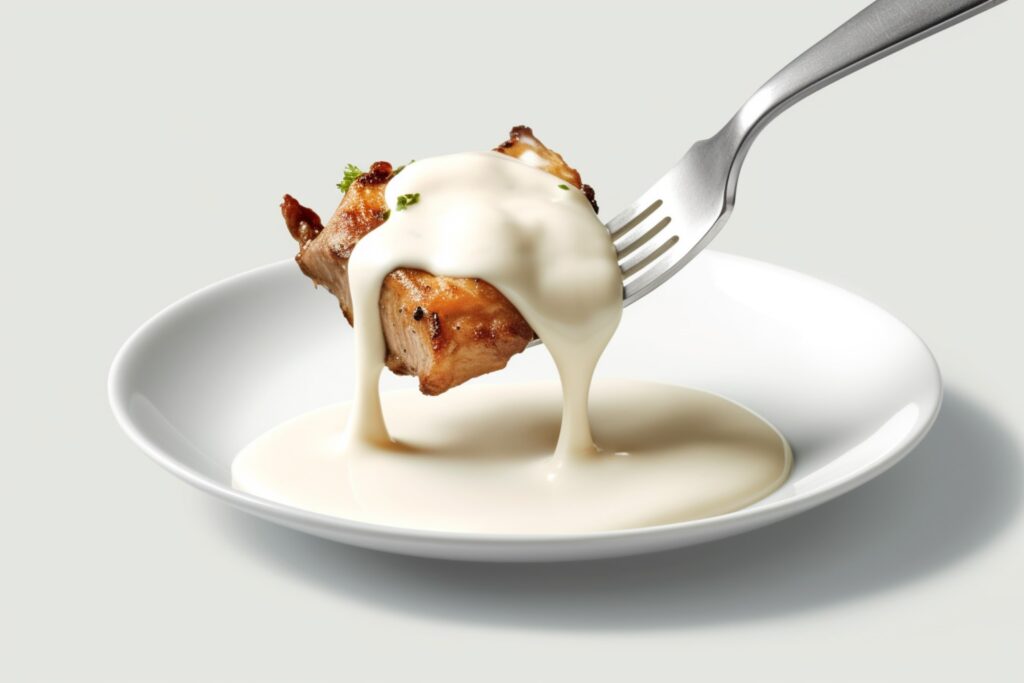
Béchamel Sauce: The Creamy Classic
Béchamel sauce, or "white sauce," is one of the five French "mother sauces" and a cornerstone of European cooking. Known for its smooth and creamy texture, Béchamel is simple to make yet incredibly versatile, serving as the base for countless dishes.
Chef Abdul, renowned for blending classic techniques with modern innovation, describes Béchamel as “a sauce that embodies simplicity and elegance—mastering it unlocks endless culinary possibilities.”
History of Béchamel Sauce
Béchamel sauce is believed to have originated in 17th-century France during the reign of Louis XIV. It was named after Louis de Béchamel, a financier and chief steward to the king. Later, French chef Marie-Antoine Carême refined and popularised it, codifying it as one of the “mother sauces.”
Chef Abdul often draws inspiration from this rich history: “Béchamel’s story reminds us how timeless recipes connect us to the past while shaping the future of cooking.” Variations of Béchamel also appear in other cuisines, such as the Italian Besciamella, which is featured in dishes like lasagna and cannelloni.
Ingrediants
- 2 tablespoons butter
- 2 tablespoons all-purpose flour
- 2 cups whole milk (warm)
- ½ teaspoon salt
- ¼ teaspoon white pepper (optional)
- Pinch of nutmeg (optional, for added depth)
Instructions:
- Make the Roux:
- Melt butter in a medium saucepan over medium heat.
- Add the flour and whisk continuously for 1–2 minutes to create a pale roux (do not let it brown).
- Add Milk Gradually:
- Slowly pour in the warm milk, whisking constantly to prevent lumps.
- Simmer and Thicken:
- Bring the mixture to a gentle simmer. Continue whisking for 5–7 minutes until the sauce thickens and coats the back of a spoon.
- Season:
- Add salt, white pepper, and a nutmeg pinch (if used). Adjust seasoning to taste.
- Strain (Optional):
- For an ultra-smooth texture, strain the sauce through a fine mesh sieve.
Chef Abdul emphasizes the importance of warm milk: “It’s the secret to achieving a silky texture without lumps—an essential step in perfecting Béchamel.”
Uses of Béchamel Sauce
The Base for Other Sauces:
- Mornay Sauce: Add grated Gruyère or Parmesan cheese.
- Cheddar Cheese Sauce: Stir in sharp cheddar for macaroni and cheese.
- Cream Sauce: Enrich with heavy cream and herbs for pasta dishes.
- Mustard Sauce: Mix in Dijon mustard for a tangy twist.
Dishes Featuring Béchamel:
- Lasagna: Layered with pasta, meat, and cheese for a classic Italian dish.
- Moussaka: A Greek eggplant, lamb, and creamy Béchamel topping casserole.
- Croque Monsieur: A French sandwich made with ham, cheese, and Béchamel.
- Vegetable Gratin: Mixed with roasted vegetables and topped with breadcrumbs.
- Chicken Pot Pie: Used as a filling base with chicken and vegetables.
Chef Abdul says, “Béchamel elevates even the simplest dishes, from comforting casseroles to gourmet entrées—the ultimate culinary blank slate.”
Tips for Perfect Béchamel Sauce
- Use Warm Milk: Warm milk blends more easily into the roux, reducing the chance of lumps.
- Whisk Continuously: Prevents lumps and ensures a smooth, creamy texture.
- Control Thickness: Adjust the milk-to-roux ratio based on the dish. For thicker sauces, reduce the milk slightly.
- Strain for Smoothness: Strain the finished sauce for a velvety texture.
- Season After Cooking: Add salt, pepper, and nutmeg at the end to avoid altering the sauce’s consistency.
Chef Abdul advises: “Treat every step as an art form, from the roux to the seasoning. Precision transforms Béchamel into a masterpiece.”
Storage and Shelf Life
Refrigeration:
- Store Béchamel in an airtight container for 3 days in the refrigerator.
- To prevent skin from forming, press plastic wrap directly onto the surface of the sauce.
Reheating:
- Reheat gently over low heat, whisking constantly. If the sauce is too thick, add a splash of milk.
Freezing:
- Béchamel can be frozen for up to 1 month, though it may need whisking during reheating to restore its smoothness.
Common Variations:
- Dairy-Free Béchamel: Substitute plant-based butter and milk (almond or oat).
- Gluten-Free Béchamel: Use gluten-free or cornstarch instead of all-purpose flour.
- Herbed Béchamel: Infuse the milk with thyme, bay leaves, or parsley for added flavour.
Why Mastering Béchamel is Essential
Béchamel sauce is a versatile cooking building block, offering endless possibilities for customization. Chef Abdul sums it up perfectly: “Béchamel is more than just a sauce—it’s a lesson in balance and technique. Master it, and you can create comforting yet sophisticated dishes.”
What’s your favourite way to use Béchamel sauce? Share your ideas in the comments below!

